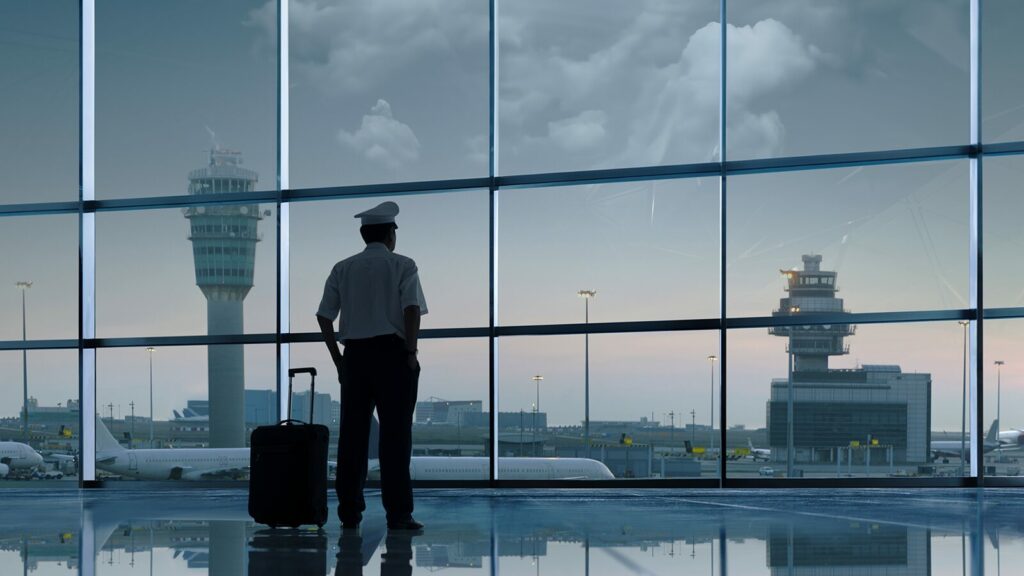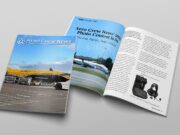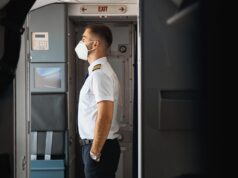
Here in the Grey Matter column, we are continuing our yearlong series on facing and managing disasters while on the road. This month we are focusing on operational meltdowns – what happens when severe weather crosses paths with airline operations. Whether it be wildfires on the West Coast, tornadoes in the Midwest, hurricanes in the South, or blizzards in the Northeast, there is quite often some form of severe or even extreme weather occurring somewhere. Aside from the general flight planning aspect of avoidance, fuel planning and alternates, what else should you be thinking about when facing a significantly troublesome weather event?
Airlines have gotten better over the years with implementing scatter and recovery plans – getting aircraft and crews out of the path of approaching storms, and then restarting the operation once the event has passed. With better planning, weather forecasting, and algorithmic decision-making, operational efficiency has improved for when and where to draw down the operation (delays, cancellations, reroutes), along with how to gradually restart it as conditions improve. Yet, as severe weather events intensify and their impact expands, the operation backs up across the system resulting in airline planners becoming overwhelmed, initiating the meltdown.
As this occurs, coordination and communication from crew scheduling might not happen quickly or at all – your first indication of a delay or cancellation may very well be a notice on your airline’s app or on an airport arrivals and departures board. Ideally, a quick call from crew scheduling will provide a partial or complete re-schedule along with hotel and transportation plans. However, expect that when the operation melts down, this is unlikely to happen and trying to get through to the crew desk might mean an hour, or significantly longer, on hold. Further, even if you get though, there is a real likelihood that, at this point, the scheduler will not have any real information or a plan for you and your crewmates. Some carriers may simply employ the policy of “take care of yourselves (get a taxi and hotel) and let us know where you end up.” Yet, other carriers do not “allow” this level of autonomy and insist you wait for instructions from them – leaving you potentially stuck at an airport deep into the night or the next day. Either way, you have some personal and professional decisions to make.
The first thing to consider is where your personal limits are for continuing. What is the weather doing, what are your skill and experience levels, what are the limits of the aircraft and airport, and where are you physically – you might have legal duty time available, but are you able to safely continue?
Because you cannot control the decision-making of the company, the next thing to think about is what to do if temporarily stranded at the airport. Maybe the company will be in timely contact and have a hotel and transportation plan for you, but anticipate that they will not as things continue melting down – especially if the effect of the weather is extensive. So, build a plan for yourself and start looking for hotels you can get to, sooner rather than later – and if you are at a large, hub-type airport with numerous flight cancellations, finding a hotel near the airport may not be possible given a rapidly increasing occupancy rate by passengers of delayed and cancelled flights. As mentioned in a previous article, having a couple of hotel apps and profiles on your phone might help you to quickly find and book a room, possibly utilizing an emergency credit card to pay for it and seeking reimbursement from the company later (or filing a grievance through your union should it unfortunately come to that).
Same goes for transportation – taxis and ride share services may be fully booked, or if in the actual location of a severe weather event, may not be available at all, possibly rendering getting to a hotel off airport property a moot point. So what to do now? If the airport is a company base, is there a crew room to hunker down in for the night? If not, and if remaining at the airport for the foreseeable future seems likely, talk to local airport personnel about any available space in which to spend the night, such as a break room or office areas; otherwise, it might be out in the terminal. In which case, a travel pillow and a sweatshirt from an airport shop might go a long way towards making a cold, uncomfortable night in some chair in the gate area slightly less painful. Yes, this happens.
As you sit on hold trying to get through to crew scheduling, find some food before everything in the airport closes and you end up without a place to stay in addition to having nothing to eat. Moreover, should you end up in the airport terminal or crew room for the night, it is highly unlikely you will be suitably rested to continue operating the next day; therefore, anticipate calling off fatigued until proper rest can be achieved. In fact, do not be surprised if your first contact from crew scheduling as they work towards getting the operation restarted reveals that they do not actually know where you are. Do your reasonable, professional best to keep them informed, but when things meltdown, you sometimes just have to sit and wait.
Additionally, do not overlook the fact that weather events can interfere with your trip before it even starts. Monitor severe weather patterns and your schedule for changes before you leave home. If you commute to work by air, know your company’s commuter policy as well as the provisions and protections of the pilot contract. If you drive or take mass transit to work, again, what does company policy and the pilot contract say about safely getting to work during periods of threatening weather and unforeseen traffic congestion? If uncertain, contact your union or pilot group representative for more information. If possible, do this before you find yourself in an uncomfortable commuting or scheduling situation.
So what is the takeaway here? As with everything else in aviation, advance planning is key. If you know your schedule will be taking you into significantly deteriorating weather conditions, check-in with crew scheduling before the wheels start to come off to get a sense of what they are seeing and planning. Pack an emergency credit card along with some food in case you get stuck and think about where your personal line in the sand is for continuing to fly. Watch for texts and emails from the company as well as the union (or pilot group) regarding severe weather plans, and do not hesitate to reach out to your pilot representatives for support and guidance.
Watch this space for more in future issues.
















































